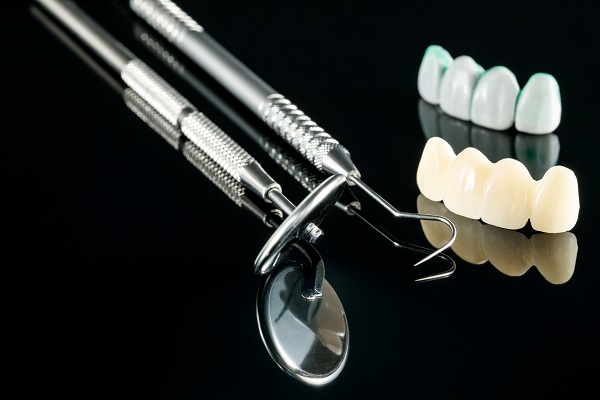A Guide to 4 Types of Dental Bridge

A dental bridge is one of the options available for replacing one or more missing teeth. Bridgework is usually provided as a fixed solution that is not detachable, unlike dentures. Bridges work to fill the gap left by missing teeth and restore full oral functions as well as the smile. Continue reading to discover some of the types of dental bridges available.
4 Types of dental bridge
Four main types of bridges are available, depending on the number of missing teeth and the presence of healthy teeth on the jaw. A typical bridgework contains fake teeth, known as pontics, and dental crowns to anchor the bridge.
1. Traditional bridge
The traditional bridge is the most common type of bridge. This bridge is used when there are one or more healthy teeth present on both sides of the missing tooth. The enamel of these teeth will be filed down, and a crown will be used to cover them. The bridge is a single extensive structure that is typically made from porcelain and fits snugly between the teeth.
2. Maryland bridge
The Maryland dental bridge is more conservative in comparison to the conventional dental bridge. Also called a resin-bonded or adhesive bridge, the pontics can be made of porcelain, metal, or acrylic and anchored to the gum line via a metal or porcelain framework. The framework is then connected to the teeth located close to the gap. It is an excellent option if the patient does not want to have any of their healthy teeth modified for dental crowns.
3. Cantilever dental bridge
The cantilever bridge is like the traditional bridge but is used when there are healthy teeth on one side of the missing tooth only. The process entails filing down the enamel layer of the natural tooth and covering it with a crown that is connected to a pontic. Like the regular bridge, the bridge will cover the gap. This bridge is not usually recommended for restoring lost back teeth where there is a lot of chewing force generated that can damage it. They are not as common as the other types of dental bridges.
4. Implant-supported bridge
An implant bridge has a similar structure as the traditional dental bridge but is supported by dental implants, instead of natural teeth. This option can be used to replace three to six missing teeth. Two implants are placed in the jawbone on the two sides of the gap and a crown is attached, then the bridgework is between them. It is typically more stable and comfortable than the other dental bridge options.
Ready to replace those missing teeth?
Damaged or missing teeth can affect the appearance of the smile, as well as the ability to perform certain functions like eating and speaking. You have multiple options when it comes to restoring a missing tooth with dental bridges. Each option has its benefits and drawbacks. With the help of an experienced dentist, you can have a tooth restoration that works best for you.
Request an appointment here: https://desertbloomdentistry.com or call Desert Bloom Dentistry at (928) 428-1617 for an appointment in our Safford office.
Check out what others are saying about our dental services on Yelp: Dental Bridge in Safford, AZ.
Related Posts
A dental bridge is a common method of teeth replacement in which a bridge of replacement teeth, known as pontics, are attached to crowns or the natural teeth on each side of the gap left by missing teeth. They are a great way to restore the appearance and health of your smile after tooth loss,…
Dental crowns are one of the versatile restorations used in dentistry. Crowns are used to save damaged teeth that cannot be saved using less invasive procedures. Damage can occur to teeth at any time, leaving them severely compromised.Placing a crown on a tooth requires making permanent alterations by removing enamel to create a better fit.…
If you have an extensively decayed tooth or the filling applied is too big for your tooth to support it, your dentist will probably recommend putting in a dental crown. This is a prosthesis designed to look like a natural tooth, but it is hollow inside to fit over the damaged tooth. In addition to…
Dental veneers are popular cosmetic dental solutions. The main goal of this treatment is to improve the appearance of teeth. These are quick dental restorations with dramatic results. Dental veneers can also improve the structural integrity of your teeth. If you want to know how this happens, here are the details.Dental damage is common. Cracking…
